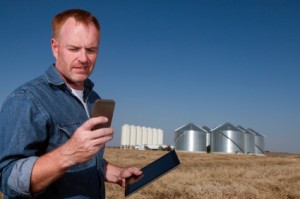 It seems almost impossible now, but it wasn’t very many years ago that the typical farmer would have laughed if you said that he’ll need Internet access everywhere on the farm. The benefit of surfing websites (when they were just static information pages with pictures) was unclear, but the idea of carrying around a computer in your truck, tractor, sprayer, or combine was patently absurd. The dust, temperatures, and vibration were far too much for the computers of the time.
It seems almost impossible now, but it wasn’t very many years ago that the typical farmer would have laughed if you said that he’ll need Internet access everywhere on the farm. The benefit of surfing websites (when they were just static information pages with pictures) was unclear, but the idea of carrying around a computer in your truck, tractor, sprayer, or combine was patently absurd. The dust, temperatures, and vibration were far too much for the computers of the time.
But then came the Blackberry, and everyone discovered the convenience of getting email on-the-go. So everyone realized they needed a Blackberry and constant access to email – why would you need anything else?
But the web grew up. More and more information was either available exclusively on the web, or was at least a lot more convenient to get on the web. Furthermore, it became about more than just getting information: you could increasingly actually DO things on the web – ordering parts and supplies, keeping records, planning, and even marketing. But laptops have never been practical on the farm: keyboards are too easily gummed up with dust, screens on hinges are too fragile, and they just take up too much space.
Then another device came along: the iPad. I have joked that EVERY farmer in America got an iPad for Christmas last year, and tablet computers like the iPad seem like they were made for farming. Adam Gittins has written an excellent blog post about the use of tablet computers in agriculture – the bottom line, though is that they are durable, easy to carry, and provide an excellent platform for using web applications.
Of course, they need to be connected to the Internet to be useful. Almost all the tablets on the market are available with some sort of cellular modem that allows them to access the Internet, but fast cellular data signals (“4G”) are rare in the rural U.S., and there are a lot of areas with only very slow or no cellular Internet access. Furthermore, a cellular modem does not provide you access to your Local Area Network (LAN) the way the AyrMesh network does. Finally, of course, the cellular options in the tablets cost extra, and the cellular companies like to charge quite a bit per month for Internet access.
Using the AyrMesh system, you can have fast WiFi access all over your farm, with access to your LAN for accessing the data sources and control mechanisms on your farm, and it makes your tablets and smartphones just that much more valuable.
